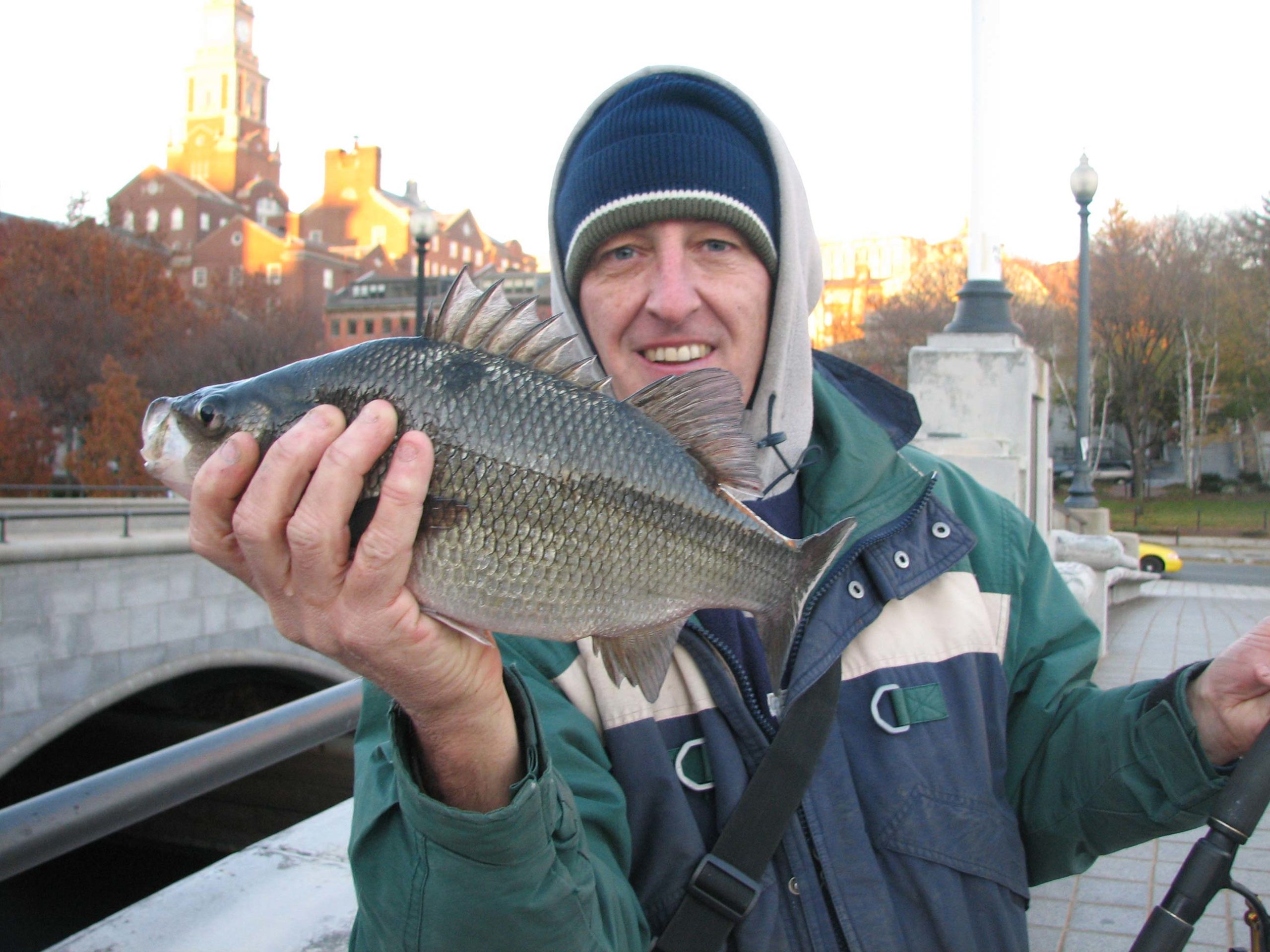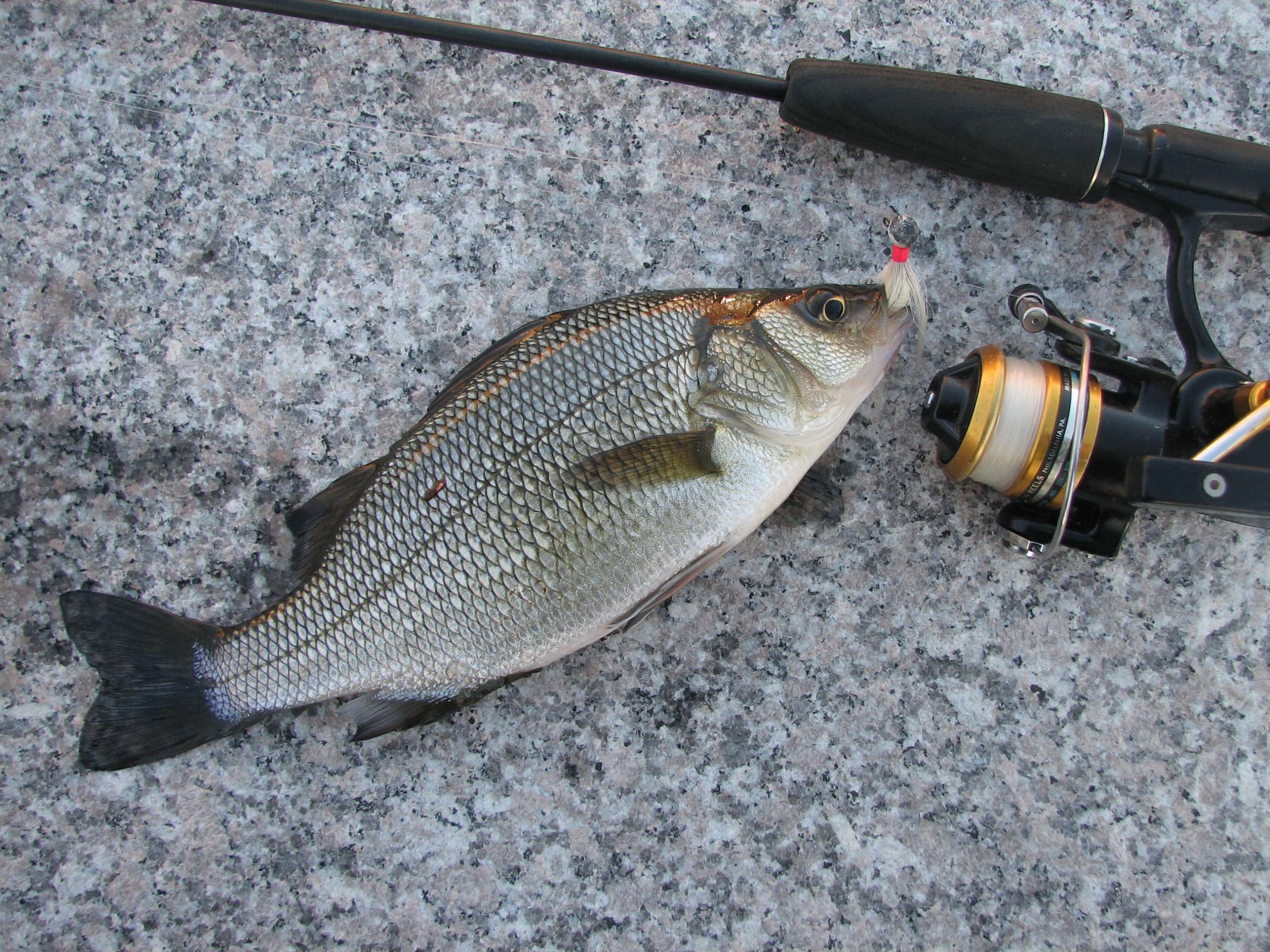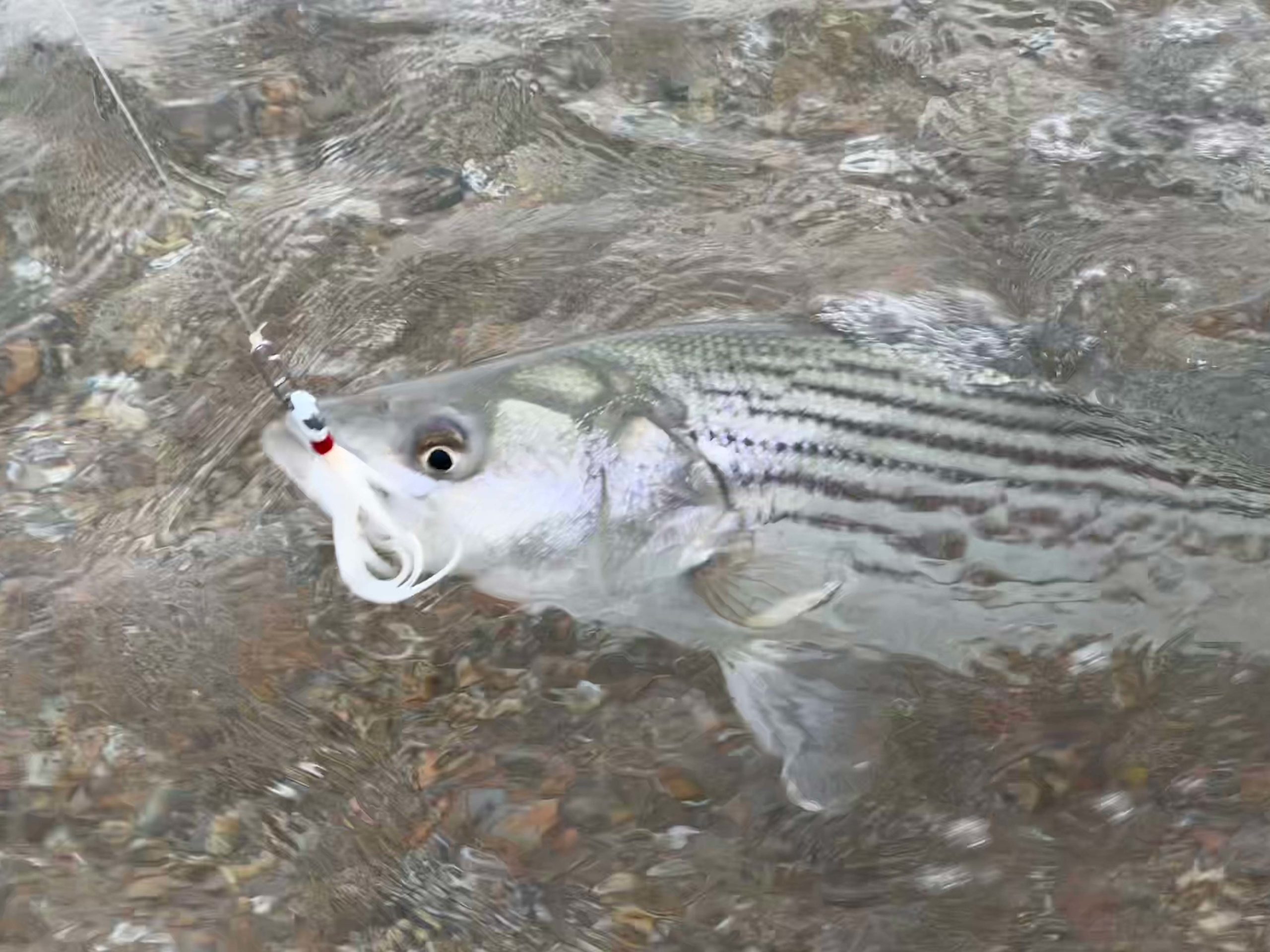
Start off your spring season with your first striped bass, or maybe a white perch!
It was last year in mid-March, the cold and ice had departed and I was on the hunt for my first stripers of the year. I was looking for holdover schoolies along one of our coastal river systems here in Rhode Island. After making many casts with a Zoom Fluke on a jighead, my retrieve was interrupted by the first take of the New Year. A quick pull and the light 7-foot rod arched. I was sure I was fighting my first striped bass of the season. But I was wrong, as I got the fish close to shore, I realized I had hooked a good size white perch that was over a foot long.
In my mind, I was thinking schoolie, but I should have known from past experience that those first fish in tidal rivers around the southern New England could be either stripers or white perch. Both inhabit the same waters in the early going, and both will hit the same lures. I released the perch, and soon afterwards I hooked another fish in the same spot. This time, after the brief perch interruption, I had my first striper of the new season. This came as no surprise since catching this spring duo has happened to me many times in the past.
Perch & Striped Bass
White perch are a mystery fish to many anglers here in southern New England. They exist in good numbers in many tidal rivers, brackish waters and even in saltwater. Adding to the confusion is the fact that some exist in landlocked lakes though the largest ones will be found in tidal/brackish waters where food is plentiful. They tend to wander these tidal waters in search of food, especially in early spring when they are the most active. The saltwater variety average 10 to 14 inches though I have landed some that were bigger. Many are the same size as holdover schoolies. The Rhode Island state record for white perch was 16 inches in length and weighed 2 pounds, 7 ounces.
I could write a description of holdover striped bass that would mirror that of white perch. It’s a fact that these fish are closely related. So, it should come as no surprise that both species tend to feed in the same locations in late winter and early spring as the weather warms. While baitfish are scarce at this time of year, I’ve always suspected that both perch and holdover stripers are grubbing for emerging grass shrimp or worms with occasional small baitfish in their food mix. The zone to catch these fish will be right along the bottom.

Around The Region
Over the years I’ve landed both over-wintering stripers along with white perch in many of the well-known river systems in southern New England. Places like the Seekonk River, Woonasquatucket River and Providence River in upper Narragansett Bay hold populations of both species. I’ve landed good numbers of white perch in the river systems along Cape Cod. Along the RI south shore, the Narrow River system holds both species. These are just the highlighted spots, but I am sure there are countless other locations in southern New England that harbor these fish. Find a river or creek that runs from fresh into saltwater and you are likely to find white perch. Stripers might be there also.
White perch tend to move around in small schools just as holdover stripers do. When I am on the hunt for both species, I tend to do a lot of moving around and casting. In addition, where you find these fish one day, they may not be there the next. They will move around a lot in search of food and they also move with the tides. They will also be moved around a lot by rain swelled waters and currents. In general, they are usually found in somewhat deeper brackish waters and sometimes even in full saltwater.

Rigged & Ready
I like to go light when targeting perch and schoolies. I generally use a rod that you might use for freshwater bass. An example would be my 7-foot St. Croix Triumph rod with a small Shimano Spheros reel spooled with 8-pound test monofilament line. I’ve also used small trout fishing outfits with line as light as 4-pound test. That is living dangerously due to the fact that you could hook a decent sized striper. The advantage with the lighter outfit is that it will cast micro jigs and lures which sometimes outfish the larger offerings.
When targeting both of these species, think jigs. My favorite is a small bucktail jig in either a 1/4- or 3/8-ounce size. I use homemade bucktail jigs and like either round head or flat head jigs. I like all white versions (head and bucktail) tied with red thread to give it some contrast. Make sure to add a 2-inch, white plastic curly tail to your offerings as these make a big difference in the action of your jig. I’ve also used other “jig-type” offerings such as 2- or 3-inch Zoom Flukes on jigheads, small shad bodies on jigheads and marabou jigs made for freshwater. The key to all of these is going small since white perch have very small mouths. If you are feeling subtle hits and not hooking up, consider downsizing your offering.
For winter weary fishermen with cabin fever, tidal river fishing for white perch and holdover schoolies can be just the cure. You’ll have to do a good amount of casting and looking in a tidal river but once found, these fish can offer light tackle enthusiasts the first good action of the young season. You might hook a white perch to begin your year, you might hook a holdover schoolie, or you might just catch both species!




